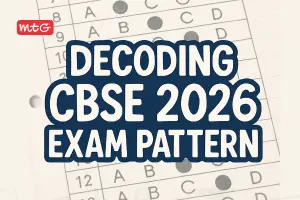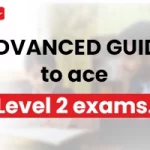Here are some multiple-choice questions (MCQs) for the CBSE Chapter 7 Class 10 Science How do Organisms Reproduce. According to the updated CBSE Syllabus, these MCQs are designed to help students become familiar with the question types and their difficulty levels. With the recent changes in the exam pattern for the Class 10 Science syllabus, MCQs have become an important part of the Class 10 Science Board exam. To assist students in understanding these question types, we have compiled MCQs specifically for Chapter 7 to strengthen fundamentals. Additionally, answers to these MCQs are also available for students to reference. These MCQs are available in this post, enabling students to access them anytime during their studies. Students can also use the CBSE Class 10 Sample Papers books for more practice.
Latest – Control and Coordination Class 10 Science MCQ With Solutions
Important – CBSE Class 10 Science MCQ
Important – Class 10 Maths MCQ: Free Chapter-Wise PDFs
CBSE Class 10 Chapter 7 How do Organisms Reproduce MCQs
Q.1. In which of the following, the characters transmitted from parents to offspring are present?
(a) Cytoplasm (b) Ribosome
(c) Golgi bodies (d) Genes
Answer
Practice More – CBSE Practice Papers Class 10 (2024) – Free PDF Download
Q.2. The number of chromosomes in parents and offspring of a particular species remains constant due to
(a) doubling of chromosomes after zygote formation
(b) halving of chromosomes during gamete formation
(c) doubling of chromosomes after gamete formation
(d) halving of chromosomes after gamete formation
Answer
Q.3. Length of pollen tube depends on the distance between
(a) pollen grain and upper surface of stigma
(b) pollen grain on upper surface of stigma and ovule
(c) pollen grain in anther and upper surface of stigma
(d) upper surface of stigma and lower part of style
Answer
(b): Pollen tube is a hollow tube which develops from a pollen grain. It carries the two male gametes to the ovule of a pistil. When a compatible pollen grain reaches the stigma of a pistil in a flower, it germinates and gives rise to pollen tube. The length of pollen tube, depends upon the distance between the pollen grain on upper surface of stigma and ovule.
Also Check – CBSE Sample Papers Class 10 for 2024 Board Exams
Q.4. A scion is grafted to a stock. The quality of fruits produced will be determined by the genotype of
(a) stock
(b) scion
(c) both stock and scion
(d) neither stock nor scion.
Answer
Q.5. Why reproduction is essential for living organisms?
(a) It keeps the individual organism alive.
(b) It fulfills their energy requirement.
(c) It maintains growth.
(d) It continues the species generation after generation.
Answer
Q.6. Pollination between different flowers of the same plant is called
(a) autogamy (b) geitonogamy
(c) xenogamy (d) allogamy.
Answer
Q.7. An event that reflects onset of reproductive phase in human females is
(a) growth of body
(b) changes in hair pattern
(c) change in voice
(d) menstruation.
Answer
Q.8. The correct sequence of organs in the male reproductive system for transport of sperms is
(a) testis → vas deferens → urethra
(b) testis → ureter → urethra
(c) testis → urethra → ureter
(d) testis → vas deferens → ureter.
Answer
CBSE Class 10 Resources – Important Formula Book For 10th Science
Q.9. Sertoli cells are involved in
(a) excretion (b) respiration
(c) nutrition of sperms (d) all of these
Answer
Q.10. Given below is a A B C D diagrammatic sketch of a portion of human male reproductive system. Select the correct set of the names of the parts labelled A, B, C, D.

(a) A-Vas deferens, B-Seminal vesicle, C-Prostate, D-Bulbourethral gland
(b) A-Vas deferens, B-Seminal vesicle, C-Bulbourethral gland, D-Prostate
(c) A-Ureter, B-Seminal vesicle, C-Prostate, D-Bulbourethral gland
(d) A-Ureter, B-Prostate, C-Seminalvesicle, D-Bulbourethral gland
Answer
CBSE Class 10 Science How do Organisms Reproduce MCQs – PDF Download
Answers-
Summary for NCERT Class 10 Science Chapter 7 – “How do Organisms Reproduce”
- Reproduction, unlike other life processes, is not essential to maintain the life of an individual organism.
- Reproduction involves creation of a DNA copy and additional cellular apparatus by the cell involved in the process.
- Various organisms use different modes of reproduction depending on their body design.
- In fission, many bacteria and protozoa simply divide into two or more daughter cells.
- Organisms such as hydra can regenerate if they are broken into pieces. They can also give out buds which mature into new individuals.
- Roots, stems and leaves of some plants develop into new plants through vegetative propagation.
- These are examples of asexual reproduction where new generations are created from a single individual.
- Sexual reproduction involves two individuals for the creation of a new individual.
- DNA copying mechanisms creates variations which are useful for ensuring the survival of the species. Modes of sexual reproduction allow for greater variation to be generated.
- Reproduction in flowering plants involves transfer of pollen grains from the anther to the stigma which is referred to as pollination. This is followed by fertilisation.
- Changes in the body at puberty, such as increase in breast size in girls and new facial hair growth in boys, are signs of sexual maturation.
- The male reproductive system in human beings consists of testes which produce sperms, vas deferens, seminal vesicles, prostate gland, urethra and penis.
- The female reproductive system in human beings consists of ovaries, fallopian tubes, uterus and vagina.
- Sexual reproduction in human beings involves the introduction of sperm in the vagina of the female. Fertilisation occurs in the fallopian tube.
- Contraception to avoid pregnancy can be achieved by the use of condoms, oral pills, copper-T and other methods.
Best Reference Books for Class 10 Science
- NCERT Textbook + Exemplar Problems-Solutions
- Foundation Course Physics, Chemistry and Biology
- NCERT at your Fingertips Science
- 100 Percent Science
- CBSE 10 Years Chapterwise Topicwise Solved Papers AKA CBSE Champion
- CBSE Chapterwise Question Bank
- CBSE Score More 15 Sample Question Papers
We hope the MCQs for the CBSE Class 10 Science Chapter 7 on How do Organisms Reproduce are helpful for your board exam preparation. Practice more with MTG CBSE Books for class 10 for success in your class 10 exams.
Keep learning and stay updated with us for more CBSE exam updates.






























